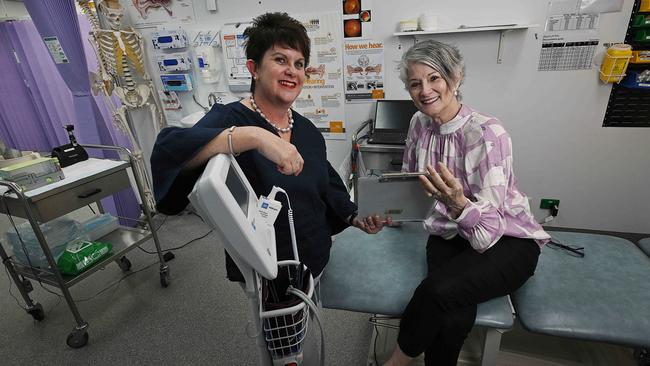Chronic disadvantage: cancer, heart attack risks three times higher in poor postcodes
Rates of heart attack, cancer, diabetes and other chronic diseases are decreasing in the nation’s wealthiest postcodes but escalating in disadvantaged pockets, a major report that tracks rates of premature death has found.

Rates of heart attack, cancer, diabetes and other chronic diseases are decreasing in the nation’s wealthiest postcodes but escalating in disadvantaged pockets, a major report that tracks rates of premature death has found.
The Victoria University report, entitled Australia’s Health Tracker: Chronic Conditions by Socioeconomic Status, finds that cancer, diabetes and lung disease incidence is three times higher in the poorest postcodes, and heart attacks and stroke are twice as common.
The report has revealed stark inequalities – which are getting wider – across the nation, sparking calls for a renewed intensive focus on preventive health.
“It’s hiding in plain sight where we have communities that have poorer health outcomes, higher needs and earlier deaths, the places where they live have significant socio-economic challenges,” said the report’s lead author Rosemary Calder, who is VU’s Australian Health Policy Collaboration Director. “This situation is getting worse and we must do something about it.”
The report finds that between 2017 and 2021, more than 125,000 Australians aged between 30 and 70 years old died from preventable diseases. The vast majority – 71 per cent – were living in the most disadvantaged communities and were more likely to be in regional or rural areas, or in the urban fringes of cities. More than 10 million Australians live in the 40 per cent of communities with the highest levels of disadvantage, placing them at significantly higher risk of preventable chronic disease and poor health.
“People who have lower wealth are continuing to die earlier at higher rates than the rest of us,” Professor Calder said. “How can we tolerate that when it’s preventable?”
The report finds the health and wellbeing of people living within disadvantaged communities is adversely affected by many social and economic factors, such as lower income, lower education, limited employment conditions, low housing quality and poorer access to resources necessary for a good quality of life.
It finds that the most disadvantaged postcodes in South Australia, Tasmania, Western Australia and the Northern Territory have the highest rates of premature death from cancer, diabetes, circulatory system diseases and respiratory diseases. The NT’s rates of premature death soar way above the rest of the nation.
Frontline doctors who manage chronic diseases in socio-economically disadvantaged communities, such as in Inala on Brisbane’s outskirts, say there is often delayed diagnosis of disease in their patients and increased vulnerability to disease. Patients often also wait inordinately long periods of time for specialist care in the public system, lack the ability to afford allied healthcare to manage chronic conditions, and are less likely to receive comprehensive multidisciplinary care.
“Access difficulties come at all levels,” said Inala Primary Care Medical Practice GP Suzanne Williams. “There is no one solution for this complex and multi-layered group of problems.
“Communities such as ours have higher levels of need, lower levels of health literacy and lower ability to pay for services.
“Primary care is clearly struggling to sustainably provide care to these communities.”
Patricia Avila, a patient at Inala Primary Care who also works there as an interpreter, said residents in the local community who do not speak English often feel isolated and do not reach out to obtain prompt healthcare. Getting around is also difficult and many people do not have a car. “It’s a double whammy – it’s not just that they’re in a poor area and they have less disposable income to go places, going anywhere is difficult,” Ms Avila said. “I think the fact that many people don’t speak English is the kind of elephant in the room.”
The VU report tracker health card has been used to inform a series of policy proposals contained in a second document entitled Getting Australia’s Health on Track 2024.
It calls for the establishment of a national framework and fund for local collaboration and co-ordination of prevention initiatives, long-term funding for community organisations and service providers, workforce supports, local health and wellbeing plans in all states, the inclusion of health initiatives in local planning schemes, investments in improving health literacy, greater collaboration between primary health and local health services, investment in co-ordinated multidisciplinary care, and a focus on reducing stigma and addressing access barriers in disadvantaged communities.






To join the conversation, please log in. Don't have an account? Register
Join the conversation, you are commenting as Logout